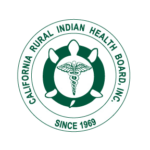
Good Health and Wellness in Indian Country (GHWIC)
The CRIHB Advancing California Opportunities to Renew Native health Systems (ACORNS) is a 5-year, CDC GHWIC funded project. The original funding for this project began in 2014 and in September 2019, CRIHB was awarded funds to implement ACORNS for another 5 years, subject to available funds.
The ACORNS project seeks to empower AIAN communities in California to implement projects that reduce rates of death and disability from commercial tobacco use, diabetes, heart disease and stroke, and reduce the prevalence of obesity and other chronic disease risk factors and conditions through a holistic approach to population health and wellness.
The CRIHB ACORNS project approach is to provide funding to Tribes to implement culturally-tailored policy, systems, and environmental changes, and clinical-community linkage strategies that address chronic diseases in their communities. Additionally, CRIHB will use this grant to provide support through training, technical assistance, multi-sectoral partnership development, and health communication strategy development to all Tribes and Urban Indian Organizations in the California IHS Administrative Area.
Project History
In May 2014, the Centers for Disease Control and Prevention released a funding opportunity entitled “A Comprehensive Approach to Good Health and Wellness in Indian Country.” This opportunity was to offer support to prevent heart disease and prevent and manage type 2 diabetes and associated risk factors. CRIHB was a recipient of GHWIC funding from 2014-2019 and used their award to implement ACORNS. ACORNS provided funding totaling $2.3 million to 39 California Tribes and Tribal organizations representing 71 federally-recognized Tribes. ACORNS grantees implemented a variety of policy, systems, and environmental strategies. Below are some examples work accomplished by ACORNS grantees.
Policy Changes:
- Established and sustained Workplace Wellness Policies
- Passed commercial tobacco free policies at Tribal health clinics, Tribal housing units, Tribal administration buildings, community gardens, and Tribal Wellness Centers
- Implemented healthy food and beverage guidelines at Tribal health clinics and Tribal administration offices
- Implemented Tribal Wellness Center policies and procedures
- Implemented breastfeeding support policy
- Created referral and screening policies for commercial tobacco use and diabetes
- Implemented exercise equipment use policies
- Implemented bike share program policies and procedures
Systems Changes:
- Implemented commercial tobacco cessation referral system
- Established diabetes education referral system
- Implemented Huddle through Electronic Health Records system
- Established regular leadership meetings for clinic staff to improve patient care
- Distributed fresh organic vegetables to Tribal members through commodity drop-offs
- Improved/defined the development, capacity, and roles of Community Health Representatives
- Established bike share programs
- Established Tribal Youth sports league
- Tribe increased fringe benefits of employees for more wellness activities
- Partnered with other departments to provide transportation and vouchers for people to access farmer markets
- Developed volunteer system to increase Wellness Center hours
- Reinstated medical yoga program and referrals to it
- Established and sustained a Diabetes Action Council with Tribal community members
Environmental Changes:
- Got buy-in and support from Tribal leadership on project goals
- Implemented a community vegetable gardens
- Implemented healthy vending machines in clinics and Tribal offices
- Installed water fountains/dispensers in workplaces
- Developed culturally tailored health education resources for commercial tobacco use, breastfeeding, and diabetes
- Increased the number of physical activity classes and offerings at Wellness Centers and Clinics
- Established regular walking groups and events with staff and community members
- Planted fruit trees around Tribal buildings
- Certified staff as Personal Trainers
- Developed and distributed Healthy Traditional Cookbooks
- Improved playground area for youth
- Trained clinic staff on commercial tobacco screening and referrals
- Purchased exercise equipment for Wellness Centers
- Installed signage to enforce commercial tobacco policies
- Developed walking paths within the community
- Established native plants and medicine gardens
- Provided nutrition and physical education and demonstrations
- Provided opportunities for and education on gathering and preparing of traditional foods
- Installed outdoor exercise stations/equipment and solar street lights for outdoor basketball court
- Installed signage using Tribe’s language on plants and medicines in the garden and in the Wellness Centers
- Developed media content to educate and empower Tribal communities in health and wellness
Partnerships and Collaborations:
- Established Wellness Center Coalition between 3 Tribes and a Tribal Health Clinic
- Partnered on grant and non-grant related events and projects
- Wrote Letters of Support for one another’s grant applications
- Established long term land-use agreement for community garden space
- Shared and cross promoted each other’s events
Additional PSE strategy ideas can be found in CRIHB’s: Tribal Policy, Systems and Environment Strategies for Reducing Chronic Disease



Funding Opportunity
Policy, Systems and Environment (PSE)
ACORNS has developed a resource guide to understanding strategies: Tribal Policy, System and Environment Strategies for Reducing Chronic Disease
What is Policy Change?
Laws, regulations, rules, protocols, and procedures, designed to guide or influence behavior. Policies can be either legislative or organizational in nature. Policies often mandate environmental changes and increase the likelihood that they will become sustainable.
Examples of organizational policies include:
- Child care sites requiring healthy options for all students
- Provision of public land for green spaces, gardens or farmers’ markets
- Required quality assurance protocols or practices (e.g., clinical care processes)
What is Systems Change?
Change the impacts all elements, including social norms of an organization, institution, or system; may include a policy or environmental change strategy. Policies are often the driving force behind systems change.
Examples of systems change include:
- Ensuring a clinic goes tobacco free
- Becoming a breastfeeding friendly agency
- Revising organizational procedures to increase cancer screening rates among patient population
What is Environmental Change?
Physical, social, or economic factors designed to influence people’s practices and behaviors.
Examples of environmental change include physical social and economic change.
Physical: Structural changes or the presence of programs or services
- Presence of healthy food choices at events and in vending machines
- Enhance playgrounds or walking trails and transform the spaces into “community park” facilities
- Availability of smoking cessation services to patients or workers
- Availability of portable indoor/outdoor play equipment in child care centers
- Installation of bike racks in community spaces
Social: A positive change in attitudes or behavior about polices that promote health or an increase in support attitudes regarding a health practice
- Increase in favorable attitudes of community decision makers about the importance of nonsmoking policies
- Increase in non-acceptance of exposure to second hand smoke from the general public
- PSAs on local radio stations about healthy lifestyles and diabetes prevention
Economic: Presence of financial disincentives or incentives to encourage a desire behavior
- Charging higher prices for tobacco products to decrease their use
- Offering double vouchers/SNAP at farmer’s markets
Webinars & Announcements
Technical Assistance:
Training and technical assistance (T/TA) is available to all California Indian Health Service Area Tribes, Tribal Health Programs, and Urban Indian Organizations. T/TA can be requested by completing the Technical Assistance Request Form and submitting it to Julie Villa at jvilla@crihb.org.
Contact
Julie Villa
Health Education Specialist
jvilla@crihb.org
916-929-9761, ext. 1512
Higinio Herrera
Health Education Specialist
916-929-9761, ext. 1526
Adriana Kimbriel
Project Coordinator
916-929-9761, ext. 1521

